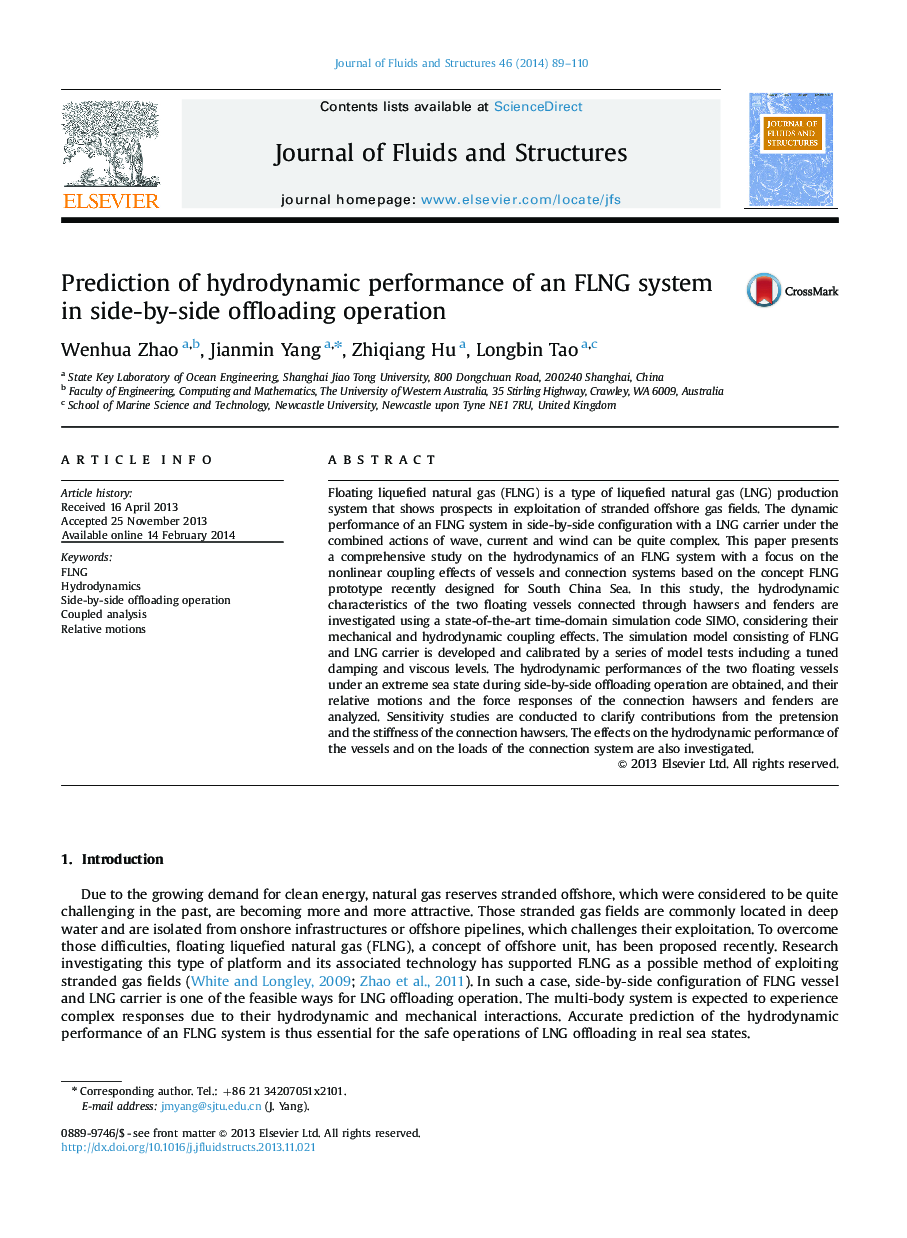| Article ID | Journal | Published Year | Pages | File Type |
|---|---|---|---|---|
| 7176143 | Journal of Fluids and Structures | 2014 | 22 Pages |
Abstract
Floating liquefied natural gas (FLNG) is a type of liquefied natural gas (LNG) production system that shows prospects in exploitation of stranded offshore gas fields. The dynamic performance of an FLNG system in side-by-side configuration with a LNG carrier under the combined actions of wave, current and wind can be quite complex. This paper presents a comprehensive study on the hydrodynamics of an FLNG system with a focus on the nonlinear coupling effects of vessels and connection systems based on the concept FLNG prototype recently designed for South China Sea. In this study, the hydrodynamic characteristics of the two floating vessels connected through hawsers and fenders are investigated using a state-of-the-art time-domain simulation code SIMO, considering their mechanical and hydrodynamic coupling effects. The simulation model consisting of FLNG and LNG carrier is developed and calibrated by a series of model tests including a tuned damping and viscous levels. The hydrodynamic performances of the two floating vessels under an extreme sea state during side-by-side offloading operation are obtained, and their relative motions and the force responses of the connection hawsers and fenders are analyzed. Sensitivity studies are conducted to clarify contributions from the pretension and the stiffness of the connection hawsers. The effects on the hydrodynamic performance of the vessels and on the loads of the connection system are also investigated.
Keywords
Related Topics
Physical Sciences and Engineering
Engineering
Mechanical Engineering
Authors
Wenhua Zhao, Jianmin Yang, Zhiqiang Hu, Longbin Tao,
